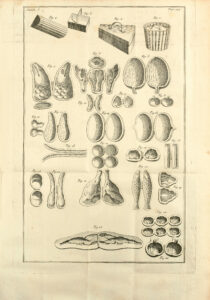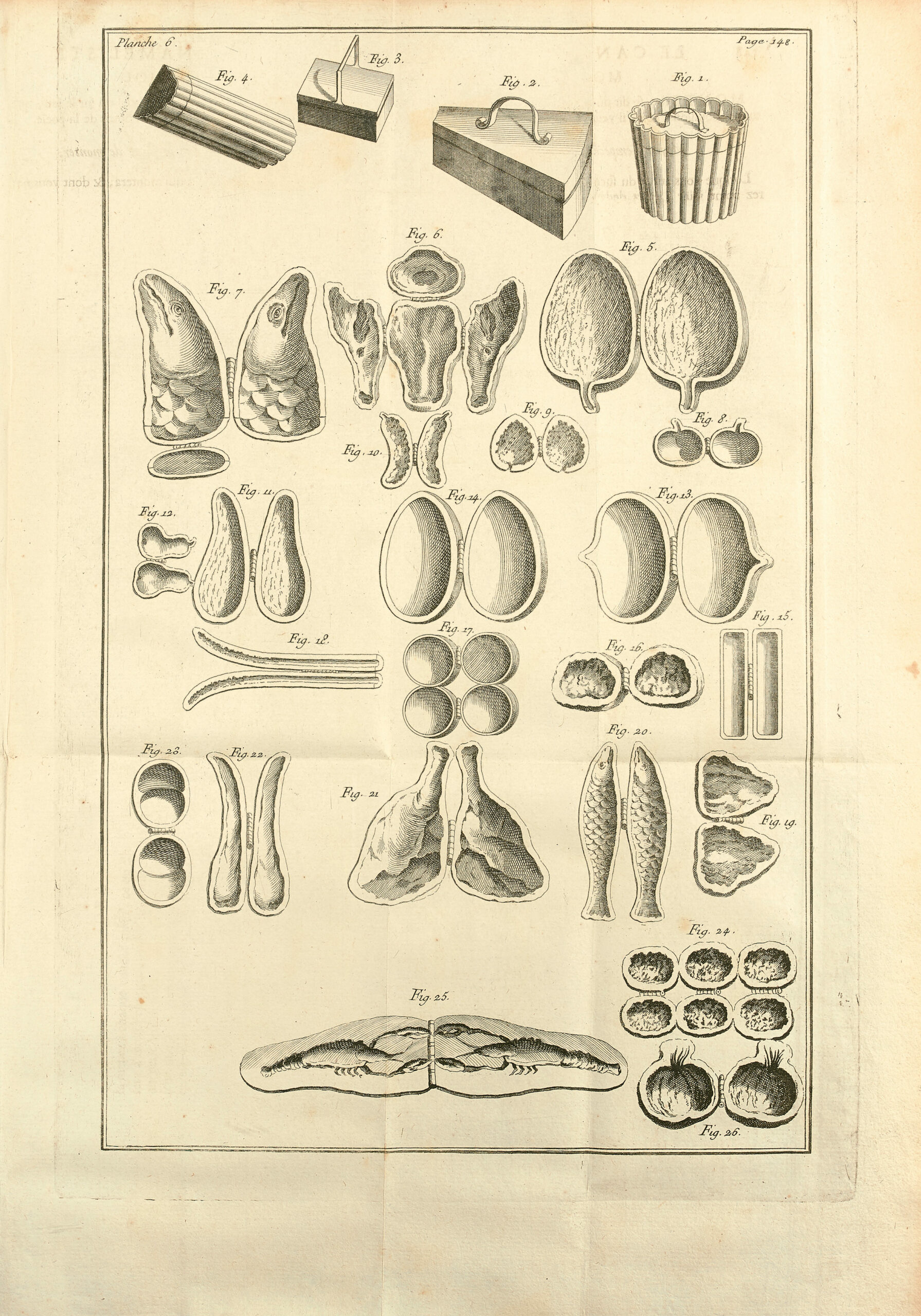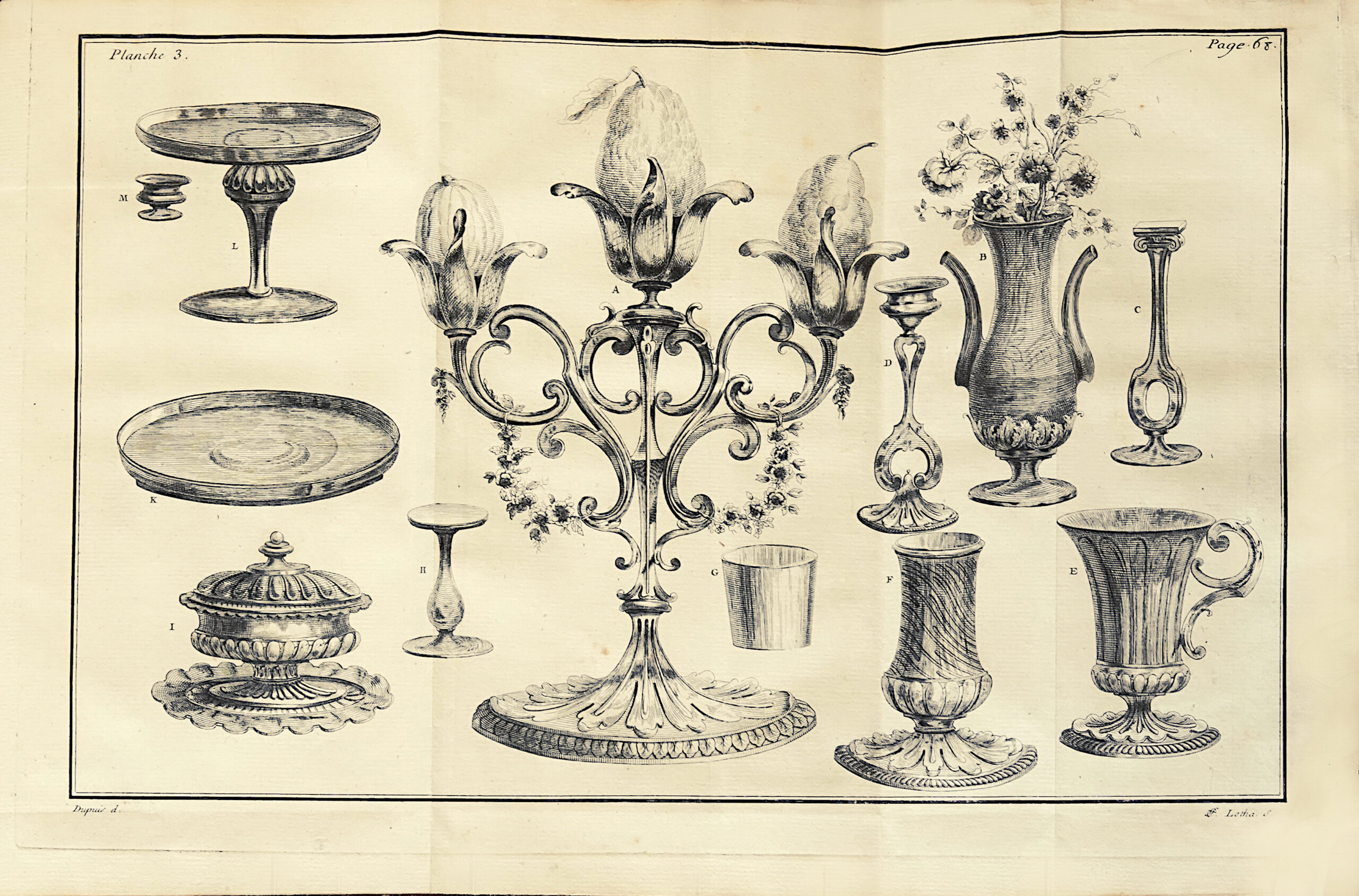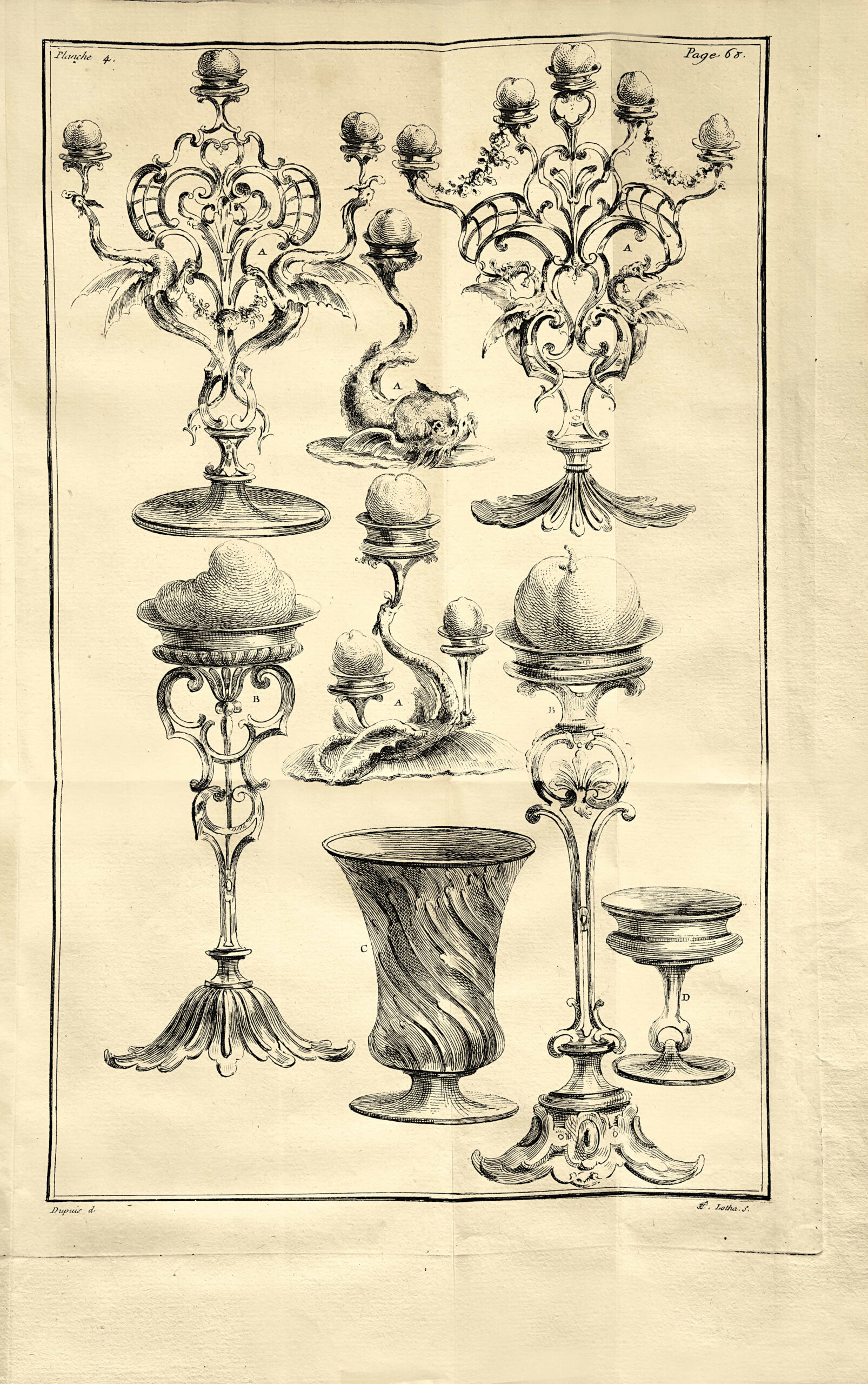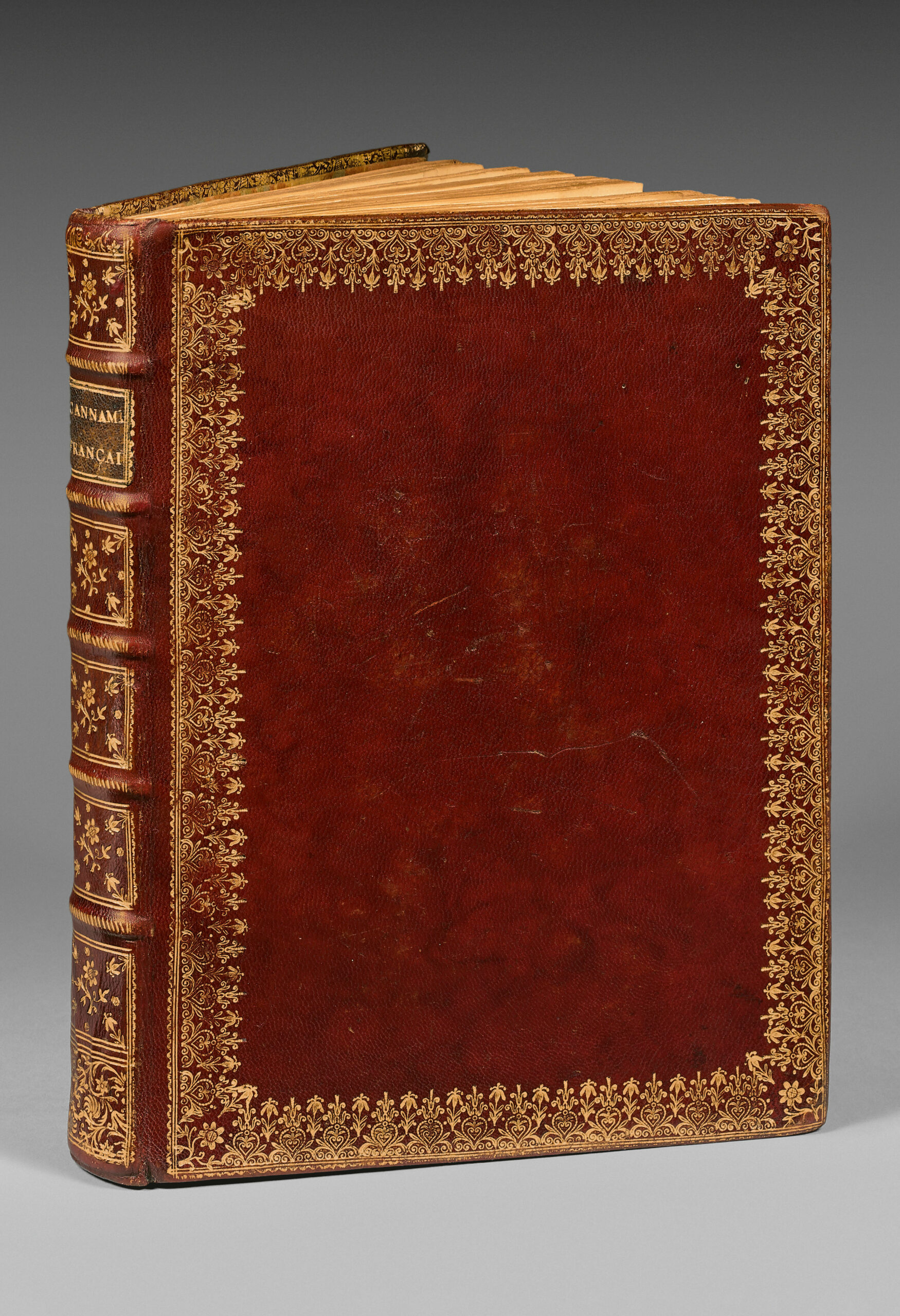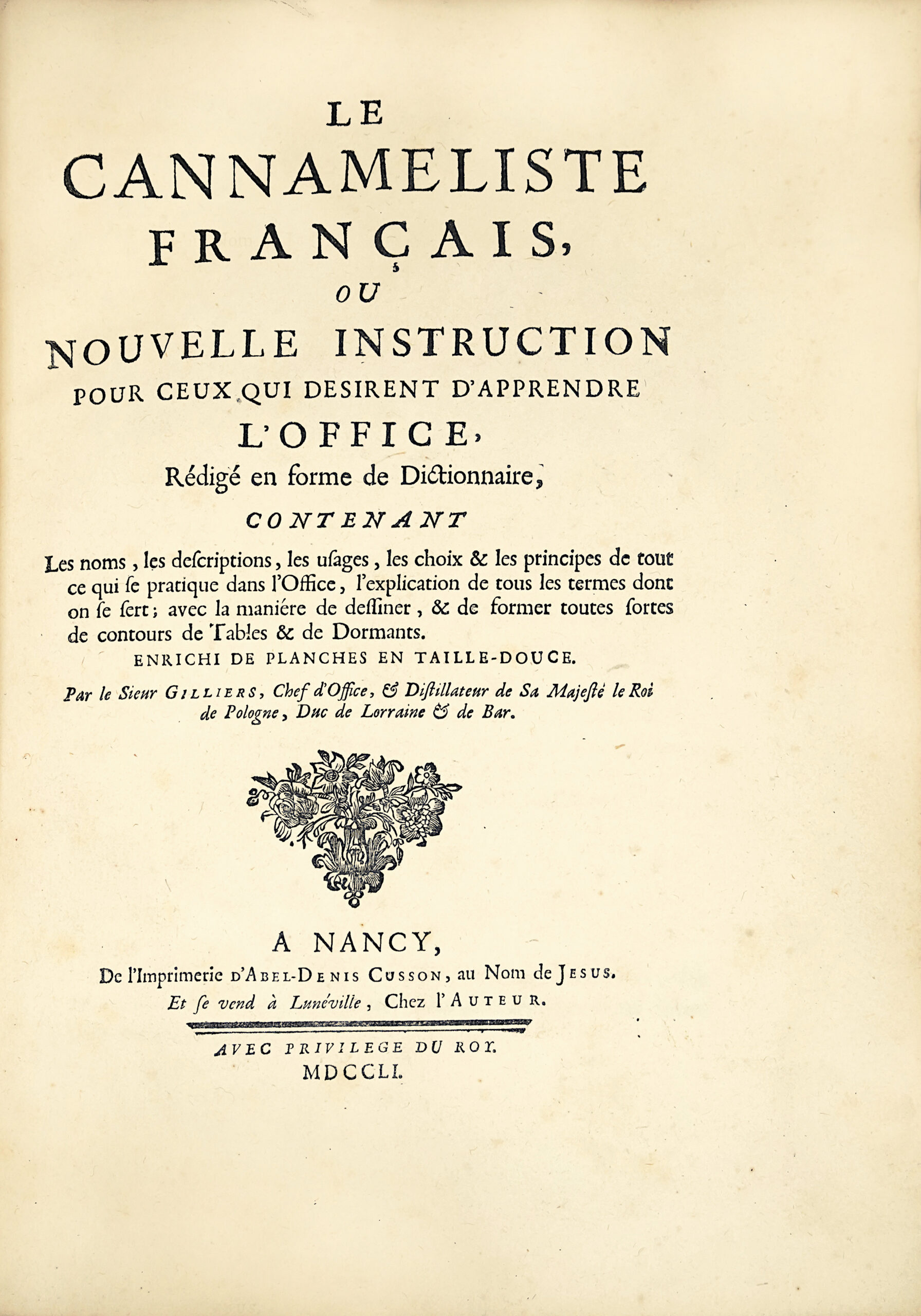Nancy, Abel-Denis Cusson, at the name of Jesus and sells at Lunéville, at the Author, 1751.
4to with 1 frontispiece, (2) ll., iii pp., 238 pp., 13 pp. of table, 13 folding engraved plates, small tear restored without loss on 3 plates, stain in the margin of p. 149.
Full red morocco, straight gilt dentelle around the covers, spine ribbed and decorated, inner border, gilt edges. Bound in contemporary morocco with dentelle.
257 x 188 mm.
Very rare first edition of one of the great classics of French gastronomic literature, illustrated with 13 plates of which Oberlé described only the second edition.
The 1751 original edition is so rare that Katherine Golden in her Gastronomica Bibliography also reports only the second edition of 1768.
“The Cannaméliste français is a much sought-after book, not only by those interested in the history of the delicacy and the culinary arts, but by artists and silversmiths who find, in the plates signed on the left by the draughtsman Dupuis and on the right by the engraver Lotha, models of elegant and graceful pieces of the eighteenth century, such as beakers, stemmed glasses, epergnes, silver coffee-pots, etc.
These engravings are finely executed. The frontispiece, which bears the stamp of the last century, is not signed. “(Vicaire, col. 405)
“One of the most famous treatises on cooking of the eighteenth century. The first edition was published in 1751. Gilliers was the cook of King Stanislas Leczinski. The work is dedicated to the Duke of Tenczin-Ossolinski, first great officer of the House of the King of Poland Mécène de la Cour d’un Nouvel Auguste.
It is a manual for beginners, with many recipes of jams, doughs, biscuits, sweets and nougats, many delicate confectioneries for which Gilliers has drawn on the work of his colleagues from Nancy, Cécile, Travers and Touchard.
The work is also of great artistic interest, as it is inspired by the great ornamentalists, it contains 1 frontispiece and 13 folding plates of models of crockery, glasses, beakers, epergnes, coffee pots, wedding cakes (?) and various cups. (Oberlé. Les Fastes de Bacchus et de Comus n°122).
Chef and distiller, in Lunéville, of King Stanislas of Poland, Duke of Lorraine and Bar, Gilliers dedicated his work to the first great officer of the sovereign’s household, the Duke Ossolinski Tenczin, head of the Aulic Council, Mécène de la Cour d’un nouvel Auguste
Historical dictionary of sweet dishes, the Cannaméliste takes its name from the old word cannamelle or canamelle, formed from canna and mel (miel, honey), referring to the taste of sugar cane.
The book, intended for the chef officers of the Court of Lorraine, evokes the different aspects of sugar consumption, describes a number of dishes and proposes various recipes.
In his preface, the author indicates that he teaches the way to comfit all kinds of fruit, both dry and liquid, and in brandy; to make all the sugar works that are practised there, with the method of serving them. He added a general knowledge of sugar cooking, the way to make refreshing liqueurs, pastilles, pastillages, all kinds of Snow, Mousse, and Glazed fruits, with the method of colouring them.
Cannameliste comes from cannamelle, a word by which the ancients designated sugar cane, whose taste is similar to that of honey, canna and mel.
As for the gourmands who are more interested in the means of making good food than in the marvels of glass and goldsmithery, Sir Gilliers, in the Cannaméliste français, will provide them with a number of recipes as delicate as they are tasty to satisfy their very respectable passion.
The beautiful and curious illustration is composed of 1 frontispiece, 1 vignette at the head of the dedication, engraved by Colin, with the arms of the Duke of Tenczin, and 13 plates out of pagination engraved by the Lorrain artist Lotha after Dupuis, unsigned ; they present a hundred figures of mounted tables, especially, beakers, glasses, pieces of silverware, models of the most appropriate furniture for service, etc. ..
Printed in a small run, the work does not appear to have been distributed, the original edition having to be put back on sale in Paris, 17 years later, with a renewed title.
A precious copy, one of the only ones listed bound in contemporary red morocco with dentelle.
This work is very hard to find in a first edition and in a quality binding.
